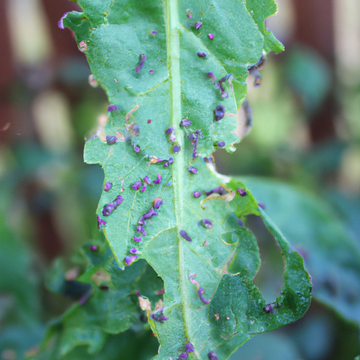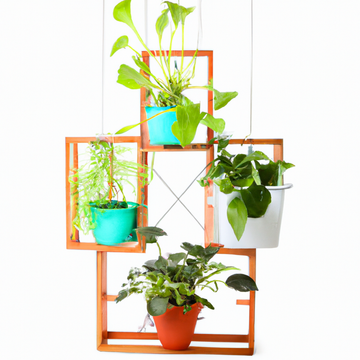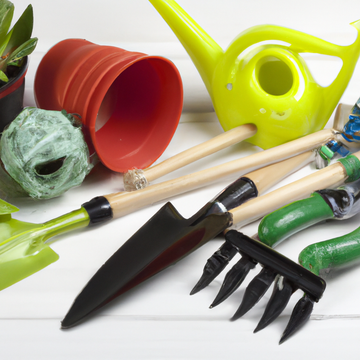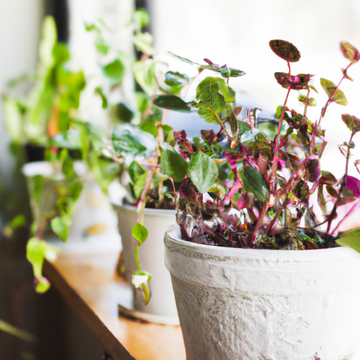14 Most Common Garden Pests and Organic Pest Control Methods
by GOLDDUST- Rethink&Revive on Apr 22, 2023

Are those pesky garden pests wreaking havoc on your beloved plants? Don't worry, you're not alone! It's a common problem that many gardeners face. However, before you reach for harsh chemicals to eradicate them, consider using organic pest control methods. Not only are they better for the environment, but they can also be just as effective in getting rid of those unwanted critters. In this blog post, we'll discuss the 14 most common garden pests and how to naturally eliminate them using organic methods like neem oil for plants. Get ready to say goodbye to those pesky intruders and hello to a thriving garden!
Aphids

Aphids may be small, but they can cause big problems in your garden. These tiny insects are notorious for sucking the sap from leaves and stems, which can stunt plant growth and spread diseases. They're also known for reproducing quickly, making it important to act fast when you spot them.
So what's an organic way to get rid of aphids? One effective method is to introduce natural predators like ladybugs or lacewings into your garden. These helpful insects will prey on aphids and keep their populations under control.
Another option is to make a homemade insecticidal soap using water, dish soap, and neem oil. Simply mix together these ingredients in a spray bottle and apply directly onto the affected plants. The soap will suffocate the aphids without harming beneficial bugs or animals that may visit your garden.
It's important to regularly monitor your plants for signs of aphids so you can catch them early on before they become a bigger problem. Taking preventative measures such as planting companion plants that deter aphids or keeping soil moisture levels consistent can also help reduce their presence in your garden.
Cabbage Worms

Cabbage worms are a common garden pest that can cause serious damage to your plants. These green caterpillars come from the eggs of white butterflies and feed on the leaves of cabbage, broccoli, kale, and other brassica family vegetables.
One way to prevent cabbage worms is by covering your crops with netting or row covers. This will keep the adult butterflies from laying their eggs on your plants.
If you already have an infestation of cabbage worms, there are several organic methods for controlling them. One method is handpicking - simply go through your garden and pick off any visible worms.
Another option is using Bacillus thuringiensis (BT), a bacteria that specifically targets caterpillars like cabbage worms. BT can be applied as a spray directly onto affected plants.
Additionally, interplanting herbs like dill or chamomile near brassicas can help repel adult white butterflies from laying their eggs in the first place.
It's important to take preventative measures against cabbage worms in order to avoid damaging infestations later on in the growing season.
Japanese Beetles

Japanese Beetles are one of the most common garden pests that can cause a lot of damage to your plants. These insects feed on the leaves, flowers, and fruits of various plants such as roses, grapes, and cherry trees.
These beetles have a metallic green body with copper-brown wing covers which makes them easy to spot in your garden. They usually emerge during the summer months and remain active until early fall.
One way to control Japanese Beetles is by hand-picking them off your plants early in the morning when they are less active. You can also use insecticidal soap or neem oil spray to get rid of these pests without harming other beneficial insects.
Another effective method is planting trap crops like geraniums or marigolds around your garden perimeter to lure Japanese Beetles away from your desired plants.
It's important to take action against Japanese Beetles before they cause significant damage to your garden. By using organic pest control methods, you can eliminate these pests while keeping your garden healthy and thriving.
Snails and Slugs

Snails and slugs are some of the sneakiest garden pests you'll encounter. They're active at night and hide under leaves, mulch, or soil during the day. You may not even notice them until it's too late.
These slimy creatures leave a trail of destruction in their wake by munching on your precious plants' foliage, fruits, and flowers. They can also create unsightly holes in your garden beds that undermine its beauty.
There are several organic pest control methods you can use to keep snails and slugs at bay. Handpicking is one way to remove these pests from your garden manually. However, this method may be time-consuming if you have a large property.
Another option is using barriers like copper tape or diatomaceous earth around plants to prevent snails and slugs from reaching them. Beer traps are also an effective solution as they attract these pests with beer, then trap them inside the container where they eventually drown.
Biological control agents like nematodes or ducks can help reduce snail and slug populations naturally without harming beneficial insects or pollinators in your yard.
Cutworms

Cutworms are common garden pests that get their name from their habit of cutting off seedlings at the soil level. These larvae can cause significant damage to a wide range of plants, including vegetables, flowers and herbs.
Cutworms come in many different species and colors, but they all share similar characteristics. They are most active during the night and hide in the soil or under debris during the day. Cutworms also have a preference for newly emerging seedlings or young transplants.
To identify cutworm infestation, look for freshly cut stems near ground level. Also, check around damaged plants at night for any sign of these pests.
Luckily there are several organic pest control methods you can use to combat cutworms without resorting to chemical pesticides. One method is handpicking them off your plants- usually done with gloves on as those little buggers bite!
Another effective way is by using physical barriers such as collars made out of cardboard or plastic cups placed around new seedlings which prevents them from accessing the plant stem directly.
In addition to these physical measures, introducing beneficial insects into your garden like parasitic wasps can help keep cutworm populations under control naturally.
So don't let cutworms ruin your gardening efforts - try some organic pest control methods today!
Earwigs

Earwigs are one of the most notorious garden pests that can damage your plants and crops. These creepy-looking insects have long, slender bodies with pincers at their rear end which they use to defend themselves from predators.
Earwigs prefer damp and dark environments, making them a common sight in gardens during springtime when the soil is moist. They feed on both live and dead plant matter, causing significant damage to leaves, flowers, fruits, and vegetables if left uncontrolled.
To prevent an earwig infestation in your garden or greenhouse, it's important to keep the area clean and free of debris where they can hide. You can also use natural repellents such as cedar oil or diatomaceous earth around the perimeter of your garden bed to discourage them from entering.
If you already have an earwig problem in your garden, there are several organic pest control methods you can try. One effective option is using sticky traps placed near areas where earwigs congregate. Another method involves placing rolled-up newspaper tubes around plants – earwigs will crawl inside these tubes for shelter allowing you to dispose of them easily.
Despite their appearance and reputation as pests, not all species of earwigs cause harm to plants; some even help by eating other pests like aphids! However, if you notice severe damage caused by these insects on your plants or crops - it's time to take action against this pesky invader!
Flea Beetles

Flea beetles are tiny insects that can cause significant damage to your plants. They feed on the foliage of your vegetable crops, leaving behind small holes and pits in the leaves. These pests are most active during warm weather conditions, making them a common nuisance for gardeners during summer months.
One of the biggest challenges with flea beetles is their ability to reproduce quickly. A single female can lay up to 500 eggs, resulting in an infested garden within weeks. This makes it crucial for gardeners to address flea beetle infestations as soon as they're detected.
Organic pest control methods such as neem oil have been effective against flea beetles. Neem oil is derived from the seeds of the neem tree and acts as both a repellent and insecticide against these pests.
Another organic method involves using row covers or netting over your plants to prevent adult flea beetles from laying eggs on them. These barriers also protect young seedlings from being damaged by flea beetle larvae in the soil.
Companion planting can also be helpful when dealing with flea beetles. Plants like garlic, onions, and chives emit strong odors that repel these pests while attracting beneficial insects that prey on them.
Managing flea beetle populations requires patience and persistence but taking proactive measures will help keep these pesky bugs at bay without resorting to harmful chemicals or pesticides.
Whiteflies

Whiteflies are tiny, winged insects that belong to the Aleyrodidae family. They usually feed on the underside of leaves and suck the sap out of plants, which can cause yellowing or wilting. These pests reproduce quickly and can cause significant damage to crops and garden plants.
One reason whiteflies are difficult to control is that they have a complex life cycle with several stages. The adults lay eggs on the undersides of leaves, which hatch into nymphs that go through four instars before becoming adults themselves. This means that organic pest control methods need to be targeted at multiple stages in their life cycle.
There are several organic methods for controlling whiteflies. One option is using sticky traps placed near infested plants to catch adult flies as they fly around looking for food sources. Another effective method is introducing beneficial insects like ladybugs or lacewings into your garden since these predators will consume both adult flies and larvae.
Another popular natural remedy for whitefly infestations is neem oil for plants. Neem oil has insecticidal properties and can act as a repellent for many common garden pests including whiteflies. It's safe to use on most plants but should always be applied according to package instructions.
Keeping an eye out for early signs of whitefly infestation and taking action right away using one or more organic pest control methods can help prevent these pests from causing serious damage in your garden or farm setting!
Leafhoppers

Leafhoppers are tiny insects that can be found in gardens and farms. They are named for their ability to jump long distances, much like a grasshopper. Leafhoppers feed on plant sap by piercing the leaves with their mouthparts and sucking out the nutrients. This feeding behavior often causes stippling or yellowing of leaves, which can eventually lead to plant death.
There are several different species of leafhoppers, each with unique physical characteristics such as coloration and wing shape. Some common species include potato leafhopper, rose leafhopper, and grapevine leafhopper.
Organic pest control methods for leafhoppers include introducing beneficial insects such as ladybugs or lacewings into your garden or using insecticidal soap sprays made from natural ingredients like neem oil. It is also important to remove any weeds that may serve as alternate hosts for these pests.
Preventative measures such as planting resistant varieties of crops or using row covers can also help reduce the likelihood of a major infestation. By taking an integrated approach to pest management, it is possible to keep leafhoppers under control without resorting to harmful chemicals.
Mealybugs

Mealybugs are a common pest found in gardens and indoor plants. They belong to the family Pseudococcidae and are known for their white, powdery appearance. These tiny insects often go unnoticed until they have multiplied and spread throughout the plant.
Mealybugs feed on plant sap which can cause stunted growth, yellowing leaves, and even death of the plant if left untreated. They also secrete a sticky substance called honeydew which attracts ants and promotes fungal growth.
To identify mealybugs, look for white cottony clusters on the stems or undersides of leaves. They can be controlled through organic methods such as using neem oil, insecticidal soap or introducing natural predators like ladybugs.
Neem oil is derived from the seeds of neem trees and has proven to be an effective organic pesticide against various pests including mealybugs. It works by disrupting their hormonal systems leading to reduced feeding activity and reproduction.
Insecticidal soap is another organic option that works by suffocating mealybugs while being safe for humans, pets, and beneficial insects like bees.
Controlling mealybug infestations requires early detection followed by prompt action with organic control methods to prevent further damage to your plants.
Spider Mites

Spider mites are tiny pests that can cause significant damage to your garden plants. These eight-legged creatures feed on the sap of leaves, leaving behind yellowed and stippled foliage. They reproduce quickly in warm, dry conditions, which makes them a common problem for gardeners.
If you suspect spider mites have invaded your plants, inspect the underside of leaves for fine webbing and small speck-like dots moving around. To control an infestation naturally, start by spraying down affected plants with a strong stream of water from your garden hose. This will dislodge some of the spider mites and their eggs from the plant.
Another effective method is to introduce predatory insects like ladybugs or lacewings into your garden as natural enemies to spider mites. If these options do not work effectively enough, neem oil can be used in conjunction with other organic pest control methods to eradicate spider mite populations without harming beneficial insects or pollinators.
It's important to address any pest problems early on before they get out of hand in order to keep your garden healthy and productive throughout the growing season. Don't overlook the seemingly minor pests like spider mites - they may be small but can have a big impact on your overall harvest!
Tarnished Plant Bugs

Tarnished plant bugs are tiny insects that can cause significant damage to your garden. These bugs are attracted to a wide variety of plants, including vegetables and fruits like strawberries, beans, and tomatoes.
One way to identify these pests is by their shield-shaped bodies that range from brownish-yellow to green in color. They also have distinctive markings on their wings that look like patches or spots.
Tarnished plant bugs feed on the sap of plants by piercing them with their needle-like mouthparts. This feeding habit can result in distorted leaves and stunted growth of the affected plants.
The best way to control tarnished plant bugs organically is through prevention measures such as maintaining good garden hygiene by removing weeds and debris from your garden beds regularly. You can also use row covers to protect your crops against these pests.
Another effective organic pest control method for tarnished plant bugs is using neem oil spray. Neem oil contains azadirachtin which repels most insect pests and disrupts their feeding behavior without harming beneficial insects.
By being vigilant about identifying early signs of infestation and taking appropriate action immediately, you can keep tarnished plant bug populations under control without resorting to harmful chemical pesticides.
Thrips

Thrips are tiny insects that can cause damage to plants in the garden. They feed on the sap of leaves, flowers, and fruits which leads to discoloration and deformation of plant parts. These pests often thrive in hot, dry conditions.
Thrips infestations are usually characterized by silver or bronze streaks on leaves, as well as distorted flower buds. In severe cases, they can also cause premature leaf drop and stunted growth.
One way to control thrips organically is by introducing natural predators such as lacewings or ladybugs into your garden. Alternatively, you can use neem oil spray which works effectively against these pests without harming beneficial insects.
Another organic pest control method for thrips is using sticky traps. These traps attract the insects with bright colors and a sticky surface which prevents them from moving around freely.
It's important to inspect your plants regularly for signs of thrip infestation so that you can take prompt action before any serious damage occurs. By implementing these organic methods of pest control, you can protect your garden from pesky thrips while maintaining a healthy environment for all living organisms involved in it!
Conclusion
Dealing with pests in your garden can be quite challenging. However, by using the organic pest control methods mentioned in this article such as neem oil for plants and companion planting, you can keep your garden healthy without harming the environment.
Remember to always take preventative measures like keeping your garden clean and removing any weak or damaged plants. By doing so, you'll reduce the chances of attracting pests into your garden.
Don't forget to observe and monitor your garden regularly to catch any signs of pest infestation early on. With these tips and tricks up your sleeve, you’ll be able to enjoy a beautiful and healthy garden all year round!




